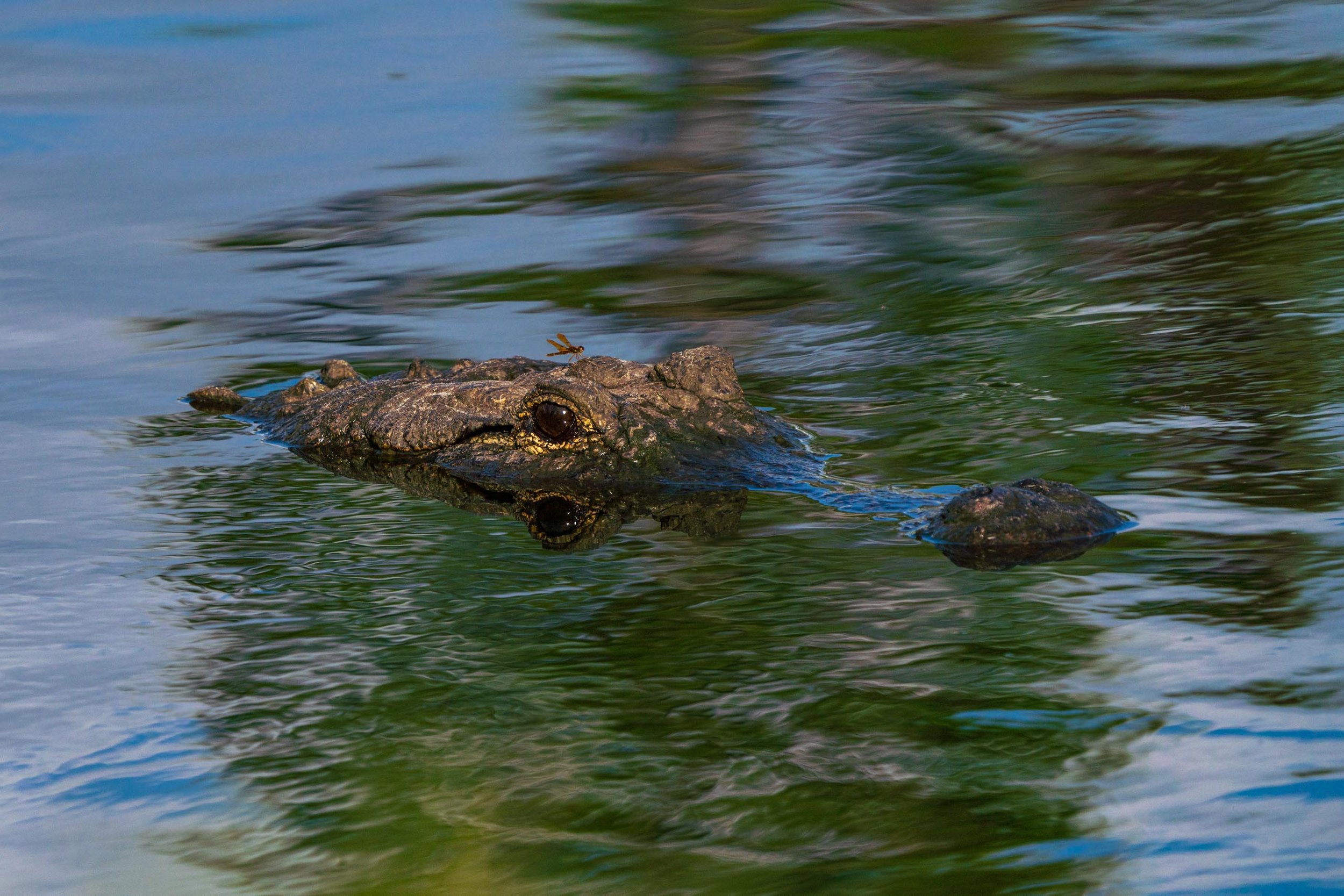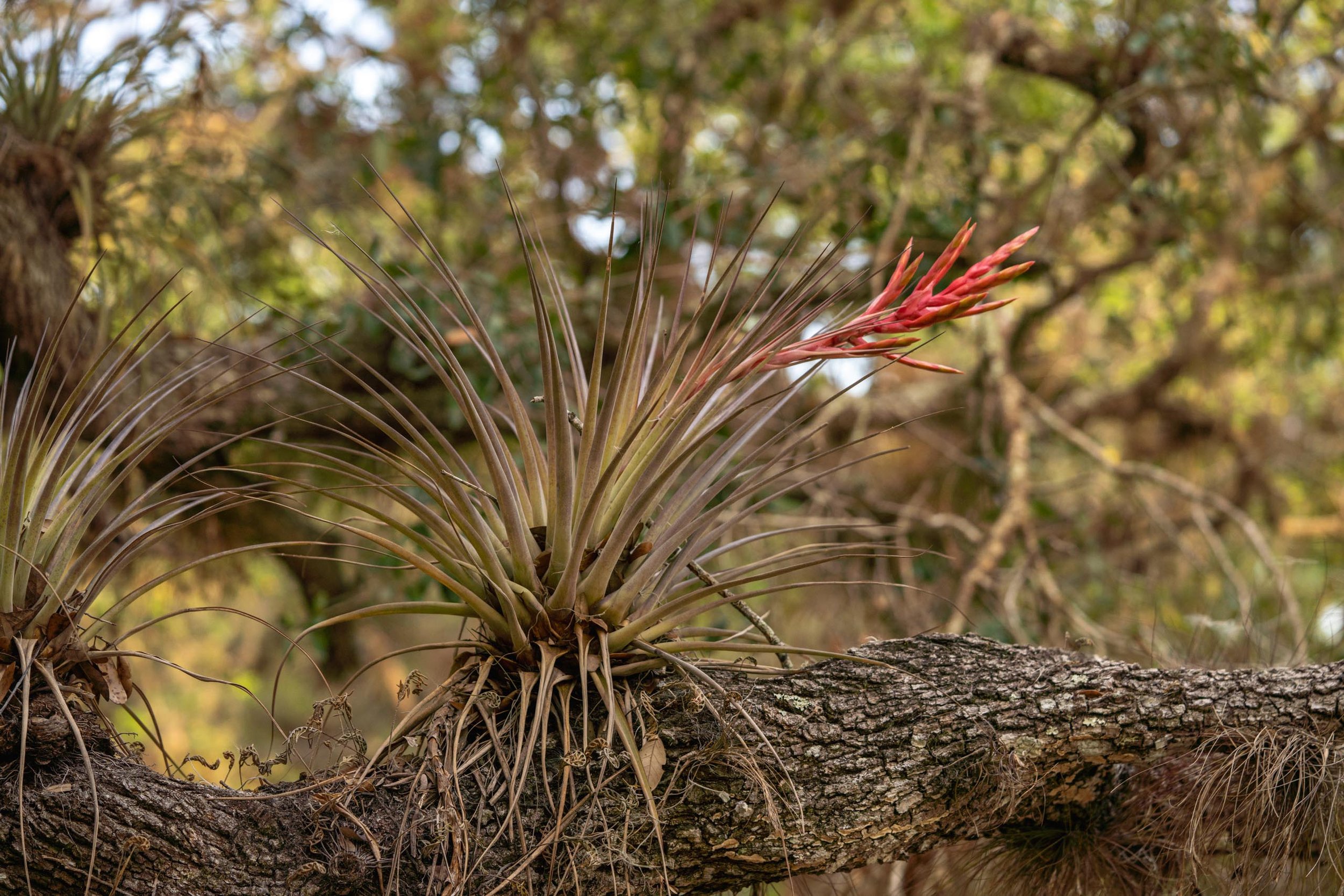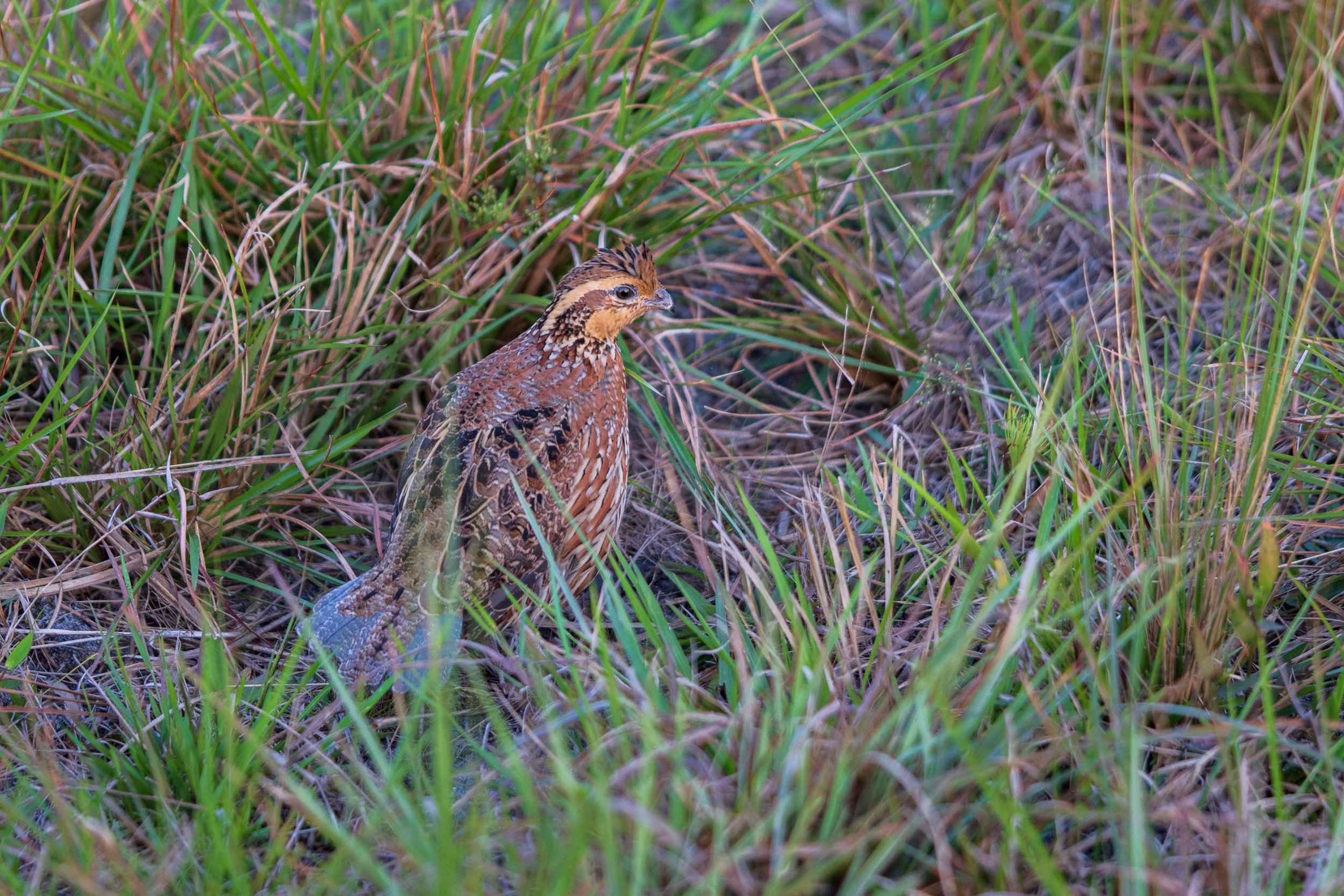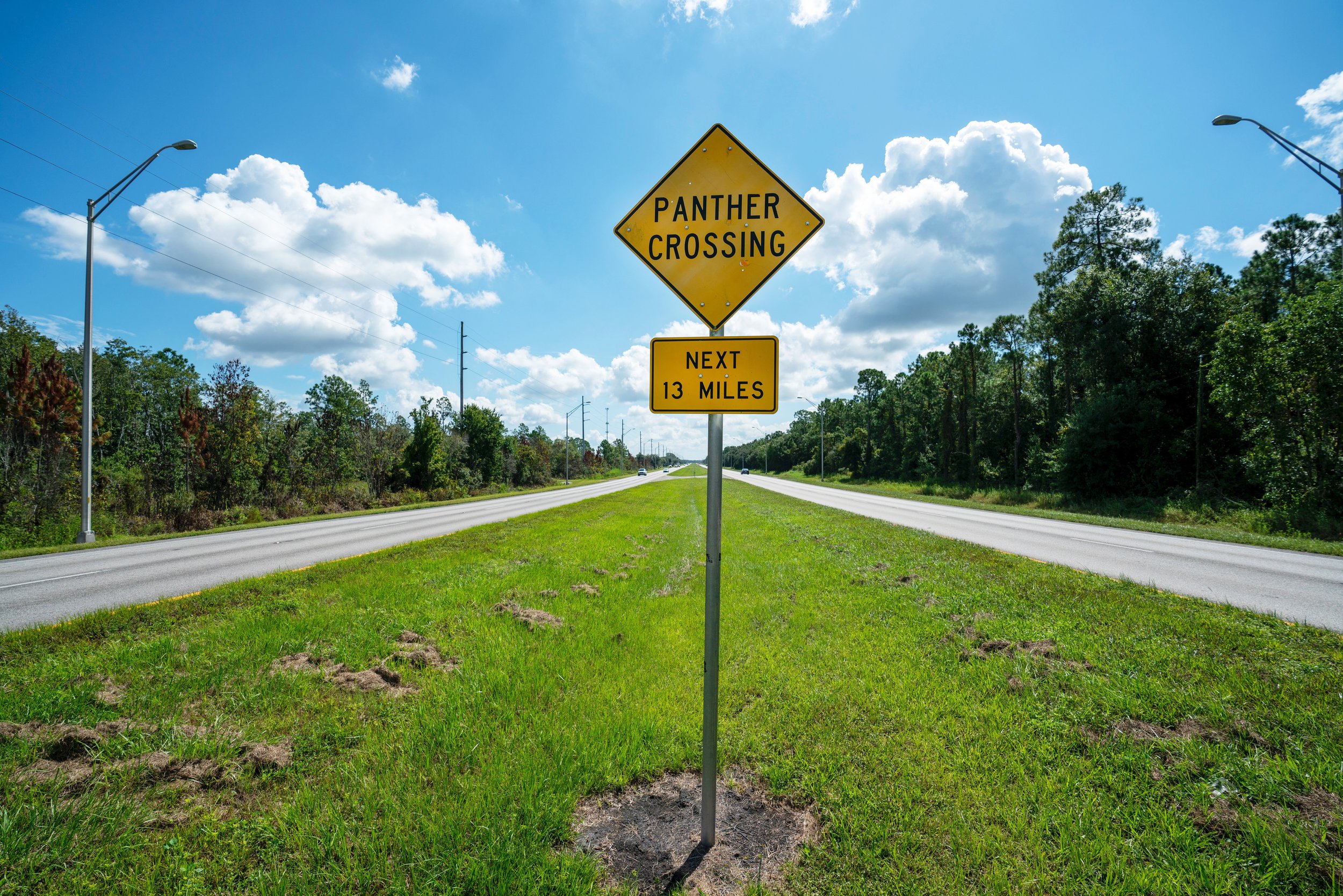
News
For all media inquiries and opportunities, please contact our Public Relations Team
Governor and Cabinet Approve Funding for Conservation Florida's Lightsey Family Ranch Project
Conservation Florida and the Florida Department of Environmental Protection move forward the conservation of 1285 acres in the Florida Wildlife Corridor.
Photos by George McKenzie Jr./Wildpath.
Conservation Florida and the Florida Department of Environmental Protection move forward the conservation of 1285 acres in the Florida Wildlife Corridor
Highlands County, FL (March 13, 2023) — Conservation Florida and the Florida Department of Environmental Protection have been working to permanently conserve 1,285 acres of ranch land, creek frontage, dry prairie and mesic flatwood communities as part of the Blue Head Ranch Florida Forever project. Today's meeting marked a crucial moment thanks to Governor DeSantis and the Cabinet, in its role as the Board of Trustees of the Internal Improvement Trust Fund, approving funding that allows the Lightsey Family Ranch, or LTL Holdings, to be permanently protected through the state's Florida Forever program.
Funding will be allocated from the Florida Forever program to complete the purchase of one easement, totaling 1,285 acres. The Lightsey Family Ranch is within the Blue Head Ranch boundary ranked number 4 in the Florida Forever Critical Natural Lands project category, approved by the Board of Trustees on March 29, 2022. The overall project contains 43,051 acres of which 1,285 acres are now under agreement to be acquired in this project area.
Map of Lightsey Family Ranch conservation easement.
Through the conservation acquisition, a large portion of the Fisheating Creek watershed and interlinked hydrological system - including creek frontage and important tributaries - will be conserved. This extends conservation ownership and management in southwestern Highlands County, which is contiguous to Archbold Biological Station to the north, and located on the southern end of the Lake Wales Ridge. Additionally, the property lies within Priority 4 of the Florida Wildlife Corridor.
As always, securing partnerships is vital in making this type of boots-on-the-ground conservation possible. "Conservation Florida is grateful to the Governor, the Florida Cabinet, and the Florida Department of Environmental Protection for their devotion to protecting our wild and agricultural lands, and for continuing to support critical land acquisitions such as this,” said Traci Deen, President and CEO of Conservation Florida.
This land serves as a habitat for precious Florida wildlife. "The conservation of the Lightsey Family Ranch is a great example of an easement acquisition with multiple benefits as it adds to the protection of endangered wildlife, native plants, water, and green space while also contributing to the local rural economy,” added Deen. “More, this property further conserves and builds a functional Florida Wildlife Corridor.”
Conservation Florida has been working on this project since May of 2021. Over the past year and a half, Conservation Florida worked with the property’s landowners and the Florida Department of Environmental Protection to secure the deal and bring it before the Governor and Cabinet.
This land will continue to provide and enhance the habitat of numerous rare and imperiled species. This portion of the state is known for its renowned, high quality natural, hydrological, and wildlife resources and historically, this land was used for ranching cattle, but now functions primarily as a homestead and for recreational hunting activities.
“It has been a great experience working with Conservation Florida again, this time on the protection of the Lightsey Family Ranch.” said landowner, Lee Lightsey. “I’m grateful to the Florida Department of Environmental Protection for their support and guidance through the process, and look forward to partnering for years to come.”
Additionally, the project encompasses a wide range and diversity of natural resources within a matrix dominated by high quality natural communities, including large blocks of endemic dry prairie and mesic flatwood communities. The Blue Head Ranch project also serves to capture, store, and slowly release substantial volumes of water that ultimately make their way to the interconnected downstream ecosystems of Lake Okeechobee and the Everglades.
This success story is just one of many conservation triumphs in saving the Florida Wildlife Corridor in this region of the state. This stunning and diverse area contains a myriad of biodiversity, sweeping plains, and vast ecosystems, all of which are critical to protect. The Corridor overall contains 17.7 million acres, and of that, 8.1 million acres are identified as conservation opportunities to build a statewide, functional wildlife corridor that’s permanently protected.
About Conservation Florida
Conservation Florida is a statewide accredited land conservancy working to conserve Florida’s water, wildlife, wild places, and protect the Florida Wildlife Corridor. The organization’s conservation projects support Florida’s native plants and wildlife, fresh water, wildlife corridors, family farms and ranches, the economy, and nature-based recreation. Since its founding in 1999, Conservation Florida has prioritized strategic and evidence-based land protection and has saved over 30,000 acres of critical habitat.
About Florida Department of Environmental Protection
The Florida Department of Environmental Protection is the state’s lead agency for environmental management and stewardship – protecting our air, water, and land. The vision of the Florida Department of Environmental Protection is to create strong community partnerships, safeguard Florida’s natural resources and enhance its ecosystems.
Conservation Florida Permanently Protects 458 Acres in the Florida Wildlife Corridor
Couple’s conservation easement donation protects land and leaves legacy.
The Welch property, which borders this highway, will provide a safer way for endangered Florida panthers to move between other protected lands. Photo by Adam Bass.
Couple's Conservation Easement Donation Protects Land and Leaves Legacy
Polk County, Fla. (March 6, 2023) – Conservation Florida, a dynamic driver of land conservation in Florida, has permanently protected 458 acres thanks to a generous donation by Dan and Marcia Welch.
As you drive along state road 60 East, you see a panther crossing sign. It reminds you to slow down and how very precious the green space is in the region. That sign sits at the newly protected Welch property.
The incredible property fills in a missing piece of the Florida Wildlife Corridor and protects rare habitat on Lake Wales Ridge, a unique geological feature that is one of the oldest natural scrub communities in Florida. From the gregarious Florida scrub-jay to the shy sand skink, the sandy ridge contains so many unique, threatened plant and wildlife species that it has been labeled a global biodiversity hotspot.
Endangered Florida scrub jays are special for many reasons. They form tight family groups, and young scrub-jays often help raise their siblings. They are also friendly and curious birds that spend their whole lives in Florida. Photo by Chuck Palmer.
“We are incredibly grateful for Dan and Marcia Welch’s generosity and for the privilege of working with them to protect such a beautiful place not only rich in biodiversity but further conserving a functional Florida Wildlife Corridor.” said Traci Deen, President and CEO of Conservation Florida. “This new conservation easement will ensure that this slice of wild Florida stays this way, forever.”
Recognizing the necessity and urgency of preserving this special land, the Welches felt compelled to protect it for future generations. “Our family has witnessed the continual loss of our native woodlands. We know our partnership with Conservation Florida will further our legacy of protecting our wonderful natural landscape,” said Marcia Welch.
Dan and Marcia Welch.
Nestled in the middle of Lake Wales Ridge State Forest, the land is home to more than 40 plants and animals found nowhere else on the planet. As the panther crossing sign shows, the property is used by wide-ranging mammals utilizing it to roam.
Conservation Florida now holds the conservation easement, which limits development on the land and protects its natural characteristics forever. Its location on Lake Wales Ridge and within one of Conservation Florida's priority regions made it an ideal candidate for protection.
“We have witnessed the continual loss of our native woodlands. We know our partnership with Conservation Florida will further our legacy of protecting our wonderful natural landscape,” Marcia Welch added.
On top of everything else, the donation of this land will also close a gap in the Florida Wildlife Corridor. Like filling in missing pieces of a giant land protection puzzle, Conservation Florida and its land protection partners have been working to protect land within the Florida Wildlife Corridor for decades.
About Conservation Florida:
Conservation Florida is a statewide accredited land conservancy working to conserve Florida’s water, wildlife, wild places, and protect the Florida Wildlife Corridor. Our conservation projects support Florida’s native plants and wildlife, fresh water, wildlife corridors, family farms and ranches, the economy, and nature-based recreation. Since its founding in 1999, Conservation Florida has prioritized strategic and evidence-based land protection and has saved over 30,000 acres of critical habitat.
2,172-acre Sampala Lake landscape now protected
2,172 acres are now permanently protected thanks to funding from the Rural and Family Lands Protection Program with help from Conservation Florida. The Sampala Lake land conservation project encompasses Sampala Lake (a 115-acre, spring-fed lake that forms the headwaters of the Econfina River) and provides aquifer recharge benefits, supports agriculture, and extends wildlife corridors. Photo credit: Randy Batista
Gainesville, Fla., Feb. 6, 2019 —Conservation Florida, a leader in statewide land conservation, announced the successful completion of its Sampala Lake land protection project in Madison County, Florida.
Photo by Randy Batista
Together, the two ranchlands that make up the project not only protect Sampala Lake, they also provide aquifer recharge benefits, support agriculture, and extend wildlife corridors. Other public benefits include habitat for wildlife, purification of surface water and the protection of a significant archeological site.
Sampala Lake is a 115-acre, spring-fed lake that partially forms the headwaters of the Econfina River. It is important for flood control and sediment reduction into the river. Sampala Lake is also a refuge for many aquatic species, including large-mouth bass and panfish. Other species that use the lake, and its surrounding land, include Florida black bears, deer, coyotes, turkeys, fox squirrels, wood ducks, and various water fowl.
The historical aspects of the project add to its conservation value. According to a written statement by the Florida Department of Environmental Protection, “ … San Pedro y San Pablo de Protohiriba on Lake Sampala is one of five missions established by Spanish explorers in the 1600’s. The mission is believed to have been constructed between 1609 and 1655 and is situated in the Yustaga province. Yustaga were a Timucua people of, what is now, northwestern Florida during the 16th and 17th centuries. Of the five missions, or doctrines, San Pedro was the largest and considered most important.”
The entire Sampala Lake project was protected with two conservation easements that prevent future development of the land while allowing it to remain in private ownership. The easements do allow ranching operations on the land to continue contributing to Florida’s economy.
“The Adams Family is pleased to once again be partnering with Conservation Florida to conserve more of our agriculture land, ensuring that future generations will have the opportunity to work the land on this historic cattle ranch in North Florida.”
The first portion of this project was completed in 2018 with the purchase of a conservation easement on 772 acres of the Sampala Lake Ranch property owned by the Koblegard family.
Now, the adjacent 1,400-acre ARCCO property is also protected. Owned by the renowned Adams ranching family, this land has been used for agriculture, ranching, and forestry for over 80 years. It is currently a cattle/calf operation and contains 352 acres of wetlands, including a cypress-tupelo basin swamp, basin marsh, bottomland forest, and hydric hammock.
LeeAnn Simmons, a spokesperson for the Adams Ranch said, “The Adams Family is pleased to once again be partnering with Conservation Florida to conserve more of our agriculture land, ensuring that future generations will have the opportunity to work the land on this historic cattle ranch in North Florida.”
The easements on both properties were purchased by the Florida Department of Agriculture and Consumer Services (FDACS) with funding from the Rural and Family Lands Protection Program (RFLPP) at a total cost of $1.92 million. The value donated by the landowners totals $328,940.
Conservation Florida worked with the Adams family throughout the RFLPP process and advocated for state funding for the project. It is currently working on 27 projects across the state totaling 178,485 acres.
“Conservation Florida is really proud of this unique land protection project,” said Traci Deen, CFL’s executive director. “Conserving this landscape protects a piece of Florida history, safeguards nature from future development, and protects land that supports Florida’s family ranches. We are grateful to have had the opportunity to help protect this landscape forever.”
A small but mighty win for conservation
A protected property no bigger than a quarter of an acre could help turn the tides for a critically endangered Florida plant thanks to a joint effort by Conservation Florida, the Florida Native Plant Society, and the Putnam Land Conservancy.
How a .25 acre parcel is providing habitat for a critically endangered Florida flower
January 10, 2019
A property no bigger than a quarter of an acre could help turn the tides for an endangered Florida plant thanks to a joint effort by Conservation Florida, the Florida Native Plant Society, and the Putnam Land Conservancy.
Clasping warea. Photo: U.S. Fish and Wildlife Service
The vacant land, located in a subdivision about 18 miles southeast of Ocala and only 7 miles from The Villages, was acquired in late 2018 by Conservation Florida in support of its mission to protect natural and agricultural landscapes for future generations.
Though the parcel is small in size, it is critical habitat for the endangered Warea amplexifolia, or as it is commonly called, clasping warea. This flowering herb in the mustard family thrives in the sandy soil found on the property. It is native to Florida and is so rare that only eight populations remain.
Conservation Florida contributed the parcel in support of the Warea Area Project led by the Florida Native Plant Society and the Putnam Land Conservancy to aid in the recovery of this critically endangered plant species, which is only found in Marion, Lake, Polk and Osceola counties.
The Putnam Land Conservancy currently owns six additional lots, holds a conservation easement on another lot in the same subdivision, and plans to acquire more.
Clasping warea. Photo: Florida Department of Agriculture
“Big wins in conservation can occur on the smallest of properties,” said Traci Deen, Conservation Florida’s executive director. “This is a big win for the future of one of Florida’s critically endangered plants. We are delighted to support the Warea Area Project with this land protection contribution.”
The Warea Area Project seeks to acquire more land in the area to preserve important wildlife habitat and a natural corridor between adjacent protected lands.
In addition to the clasping warea, the project area is home to other rare species including the Florida sand skink, Florida black bear, gopher tortoise, and Sherman’s fox squirrel.
“This is a great example of organizations working together to achieve our conservation missions,” said Juliet Rynear, executive director of the Florida Native Plant Society. “We are grateful to add this property to the Warea Area Project to protect the endangered clasping warea.”















